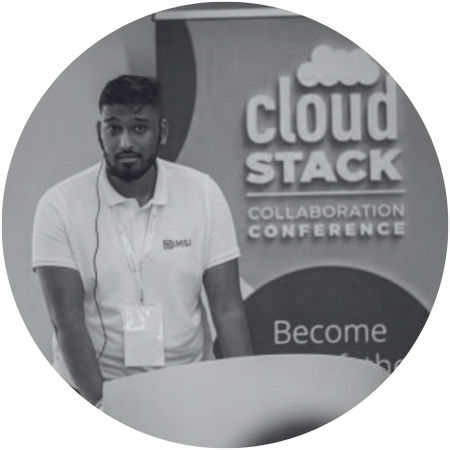Event Agenda
Time
Name
Speaker
Agenda
12:00 - 18:00
Hackathon
Join us for the CloudStack Collaboration Conference Hackathon on Day 1, where innovation, creativity, and collaboration come together! This event invites developers, cloud architects, system admins, and open-source enthusiasts to team up and solve real-world challenges in the cloud ecosystem using Apache CloudStack. Whether you’re a seasoned pro or new to the cloud community, this hackathon is your opportunity to dive into cutting-edge technologies, exchange ideas with fellow contributors, and push the boundaries of cloud computing.
During the hackathon, participants will work on exciting projects ranging from improving CloudStack features, developing new plugins, or tackling specific cloud-related problems. Expert mentors and CloudStack maintainers will be available to provide guidance and support, ensuring everyone can contribute and learn. The event will conclude with a showcase of the top solutions, with prizes awarded for the most innovative, impactful, and technically impressive projects.
Whether you’re here to code, network, or learn, the Hackathon promises a vibrant atmosphere of experimentation and collaboration. Let’s build the future of cloud computing together!
Time
Name
Speaker
Agenda
09:00 - 09:30
Registration and Morning Coffee
09:30 - 09:55
Welcome to the CloudStack Collaboration Conference 2025
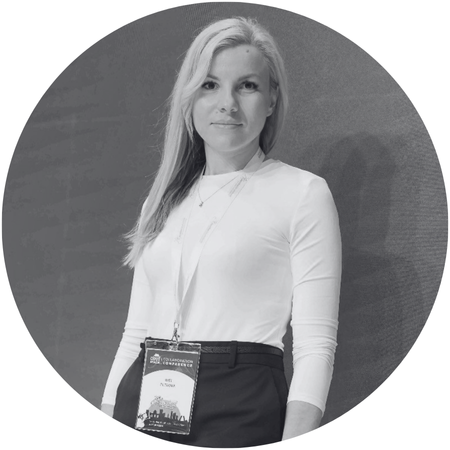
Ivet Petrova
Apache CloudStack PMC Member
09:55 - 10:35
Keynote: From Vision to Impact: Making a Difference with CloudStack

John White
COO, US Signal
10:15 - 10:45
Keynote: From Vision to Impact: Making a Difference with CloudStack

John White
COO, US SIGNAL
At last year’s CloudStack Collaboration Conference, US Signal shared why we chose Apache CloudStack as the foundation for our OpenCloud platform and our vision for what it could become. One year later, that vision has translated into tremendous growth, customer adoption, and innovation. In this keynote, US Signal’s COO, John White will reflect on the first year of building and scaling OpenCloud with CloudStack, the game-changing factors that made the difference, and the lessons learned along the way. Looking ahead, he will also share insights into the evolving open-source landscape, why CloudStack is well-positioned to lead in an evolving landscape, and how the broader community can continue to drive the next chapter of Open Cloud.
10:15 - 10:45
Keynote: Navigating the Next Wave of Innovation

John White
COO, US SIGNAL
In an era where technological advancements shape the future of industries, open source stands at the precipice of the next major disruption. This keynote will explore the current state of the industry and highlight the immense potential for transformation through open-source technologies. Historically, every decade has witnessed a groundbreaking technological leap—from the rise of the internet in 1998 to the advent of virtualization and the iPhone in 2008, the shift to public cloud in 2012, and now, as we approach 2028, the question remains: What will be the next seismic shift?
In this keynote, John White, Chief Operating Officer at US Signal will address:
- The Why: The fundamental reasons driving the shift towards open source and its disruptive potential.
- Future State: Projections and possibilities for what the technological landscape might look like with widespread open-source adoption.
- Limiting Factors: Challenges and obstacles that could impede this transformation including compute processing limitations, government regulations, power constraints, AI oversight, vendor disruptions, and public cloud failures.
- Gotchas: Unforeseen pitfalls and considerations businesses must be aware of.
Join us as we chart a course towards a future where open source is the driving force in the technological revolution. Together, we will unlock new opportunities, mitigate risks, and help shape a more innovative, efficient, and inclusive digital world.
10:50 - 11:30
Keynote: Working with CloudStack for over 10 years

Wido den Hollander
CTO, Your.Online
11:00 - 11:30
Keynote: Working with CloudStack for over 10 years

Wido den Hollander
CTO, Your.Online
Wido den Holander has been working with CloudStack since 2011, back when it was still known as cloud.com and had just been acquired by Citrix. Two years later, in 2013, the project found its new home at the Apache Software Foundation (ASF). Over the past decade, CloudStack has been a innovative project and proving itself as a reliable foundation for our business. In this keynote, we’ll reflect on that journey, share key milestones, and highlight how CloudStack has remained a stable pillar of our infrastructure for more than 10 years.
11:40 - 12:25
Keynote: State of the Union
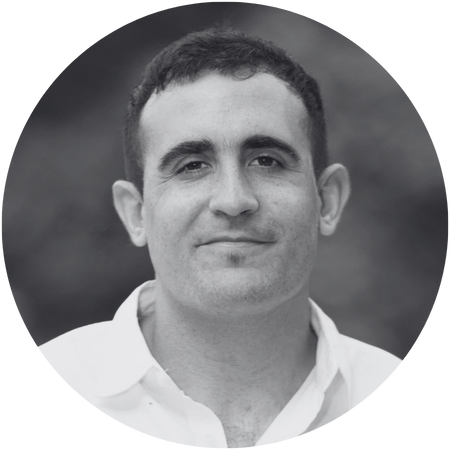
Nicolas Vazquez
VP, Apache CloudStack
The Apache CloudStack project has had another exciting year – with growth in adoption, functionality and community size. In the project’s annual State of The Union talk, the current VP of the project, Nicolas Vazquez, reflects on the last year of the project’s collaboration, developments in CloudStack and community activity. He sets out how he sees the project developing over the next few years.
12:25 - 13:30
Lunch Break
Lorem ipsum dolor sit amet, consectetur adipiscing elit. Ut elit tellus, luctus nec ullamcorper mattis, pulvinar dapibus leo.
Venere
Mercurio
Nettuno
13:30 - 14:00
Building a sovereign, multi-zone Cloud with CloudStack

Brian Turnbow, Marco Ziglioli
Team members, CDLAN
13:30 - 14:00
Building a sovereign, multi-zone Cloud with CloudStack

Brian Turnbow, Marco Ziglioli
Team Members, CDLAN
CDLAN adopted CloudStack to build a truly sovereign cloud, distributed across its data centers in Milan and Rome, with a multi-zone architecture and multi-hypervisor support (KVM and VMware). Thanks to a pay-per-use model, our customers and partners can access scalable resources with no upfront costs, while benefiting from hybrid integration and simplified management. In our talk we will share how this resilient infrastructure has enabled CDLAN and our partners to accelerate the adoption of cloud services in the Italian Market.
14:10 - 14:40
Infrastructure Strategies and Innovation in the AI Era

Daven Winans
VP of Engineering & Innovation, US Signal
15:10 - 15:40
Infrastructure Strategies and Innovation in the AI Era

Daven Winans
VP of Engineering & Innovation, US Signal
The rapid rise of AI, large language models, and inference workloads are driving unprecedented demand for compute resources. CloudStack operators and service providers need to leverage practical solutions and architectures to deliver services and performance to the user base.
In this session, US Signal will explore how infrastructure is evolving to meet these demands, with a focus on real-world performance metrics comparing CPU-only vs GPU-accelerated workloads and x86 vs Arm64 platforms. We’ll also examine the critical role of open-source hypervisors, GPU virtualization, time slicing, and containerized workloads on high-core hosts in maximizing utilization, improving efficiency, and reducing stranded resources.
Attendees will gain insight into how these innovations converge into hybrid infrastructure models that balance performance, cost, and sustainability.
By the end of this session, participants will be able to:
1. Evaluate the impact of AI/LLM inference workloads on infrastructure performance and global power consumption.
2. Compare performance-per-watt across CPU-only vs GPU-accelerated systems and x86 vs Arm64 architectures.
3. Apply concepts of open-source hypervisors, vGPU, GPU time slicing, and containers to optimize resource efficiency.
4. Design hybrid infrastructure strategies that balance performance, cost, and sustainability for AI-era workloads.
14:50 - 15:20
Exploring VMware to CloudStack Migration

Joffrey Luangsaysana, Grégoire Lamodière
Team Members, DIMSI
14:50 - 15:20
Exploring VMware to CloudStack Migration: Operational Guarantees and business impact

Joffrey Luangsaysana, Grégoire Lamodière
Team Members, DIMSI
This session offers a comprehensive business overview of migrating from VMware to CloudStack, examining impacts on services, cost management, and IT strategy to help organizations maximize their cloud investments.
15:30 - 16:00
Extensions Framework (XaaS) - Enabling Orchestrate Anything
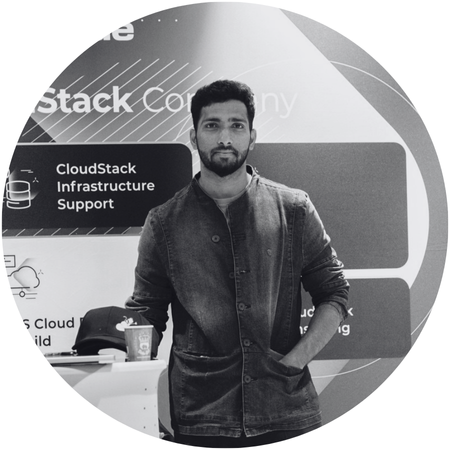
Harikrishna Patnala, Marco Sinhoreli
Team Members, ShapeBlue
15:30 - 16:00
Extensions Framework (XaaS) - Enabling Orchestrate Anything

Harikrishna Patnala, Marco Sinhoreli
Team Members, SHAPEBLUE
The Extensions Framework in Apache CloudStack enables seamless integration of external services (XaaS) into the CloudStack ecosystem. It allows operators to register and manage custom extensions, supporting a wide range of types such as orchestrators, network elements, and authenticators. This empowers users to tailor CloudStack’s behaviour to their infrastructure needs. CloudStack also ships with several inbuilt extensions, including Proxmox, Hyper-V, and Canonical MaaS, demonstrating the flexibility of the framework. For instance, a Proxmox extension can manage VM lifecycles through custom scripts, showcasing the power and adaptability of CloudStack’s extension model.
16:10 - 16:40
Bringing CloudStack to Life with LLMs
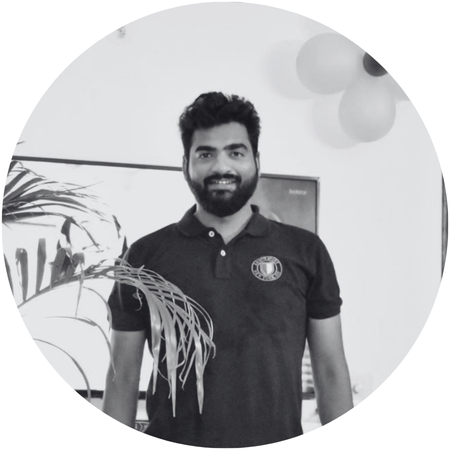
Vivek Kumar
DevOps Lead, Yotta
16:10 - 16:40
Bringing CloudStack to Life with LLMs: Enabling Intelligent, Conversational Troubleshooting

Vivek Kumar
DEVOPS LEAD, YOTTA
Experience the power of AI-driven ChatOps tailored for Apache CloudStack. This modular Python-based chatbot, powered by OpenAI, enables users to ask natural language questions that translate into real-time MySQL queries, fetch logs from Elasticsearch, and deliver actionable insights, all through an intuitive web-based interface. With built-in memory, dynamic configuration, and intelligent log analysis, it redefines how Ops teams troubleshoot, monitor, and interact with cloud infrastructure. Join us to see how conversational AI can streamline your operations and accelerate problem resolution.
16:50 - 17:20
Back to the Origins of the Internet: Sovereignty as Strategic Survival
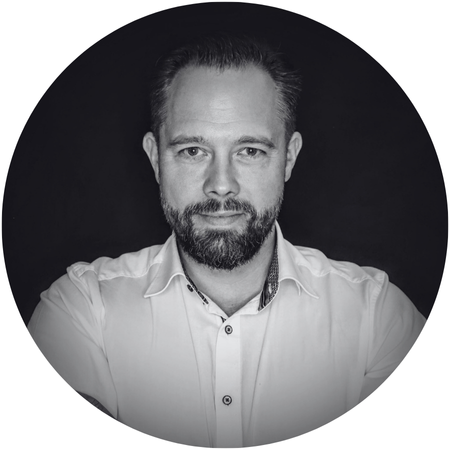
Alexander Lapp
Business Development, proIO
16:50 - 17:20
Back to the Origins of the Internet: Sovereignty as Strategic Survival

Alexander Lapp
Business Development, proIO
The internet once promised decentralization. Today, a few large monoliths dominate the digital world. How did the vision of the Internet pioneers turn into a dangerous dependency? This presentation highlights how technical vendor lock-in, geopolitical risks, and the cultural imprint of AI models threaten the foundations of our digital sovereignty. We discuss how open-source technologies such as CloudStack can put power back in the hands of users to regain control over data and infrastructure. Learn why sovereignty is not just a philosophical concept, but a strategic necessity for the survival of every company.
13:30 - 14:00
Customizing CloudStack Network Topology with VNF Appliances

Wei Zhou
SOFTWARE ARCHITECT, SHAPEBLUE
13:30 - 14:00
Customizing CloudStack Network Topology with VNF Appliances

Wei Zhou
SOFTWARE ARCHITECT, SHAPEBLUE
The VNF appliance, introduced in Apache CloudStack 4.19, has been used by several CloudStack users as an alternative to the CloudStack Virtual Router. This talk will provide an overview of VNF appliances and showcase some real-world use cases. It will also introduce ongoing work on the VNF provider framework, which offers much better integration with VNF appliances. Topics will include technical details, the built-in VNF provider, and guidance on how to develop custom VNF providers.The VNF appliance, introduced in Apache CloudStack 4.19, has been used by several CloudStack users as an alternative to the CloudStack Virtual Router. This talk will provide an overview of VNF appliances and showcase some real-world use cases. It will also introduce ongoing work on the VNF provider framework, which offers much better integration with VNF appliances. Topics will include technical details, the built-in VNF provider, and guidance on how to develop custom VNF providers.
14:10 - 14:40
Cost Effective, Secure Repatriation with Ampere & CloudStack

Pete Logan
Principal Field Engineer, Ampere
14:10 - 14:40
Cost Effective, Secure Repatriation with Ampere & CloudStack

Pete Logan
Principal Field Engineer, Ampere
It’s established now that moving workloads off hyperscalers will reduce TCO, but you can offer more when dropping that onto Ampere CPU based systems through better efficiency and high utilisation. Pete Logan from Ampere describes how, using the joint architecture with CloudStack & ShapeBlue. Bonus; you can port your Graviton and other Arm workloads directly too!
14:50 - 15:20
LINSTOR/DRBD updates for CloudStackers

Philipp Reisner
CEO, LINBIT
14:50 - 15:20
LINSTOR/DRBD updates for CloudStackers

Philipp Reisner
CEO, LINBIT
In this session, Philipp will provide a concise introduction and overview of LINSTOR and DRBD, explaining how they offer highly available block storage to VMs in CloudStack clusters.
From there, Philipp will present the recently introduced features and improvements of LINSTOR and DRBD, including a discussion of the rationale behind the changes and the next items on the project’s roadmap.
On the LINSTOR side, this includes: satellite restart time with thousands of resources, general scalability improvements in the range of 1,000 to 10,000 virtual volumes, and storing the master passphrase using systemd credentials (TPM chip), as well as multipathing of DRBD replication links.
On the DRBD side: resync without replication, higher bitmap granularity, performance optimizations, zero-copy receive, and more.
On the LINSTOR driver in CloudStack: thoughts on online migrating storage volume between primary storage.
15:30 - 16:00
Migrating 1000’s of VMs from VMware to CloudStack
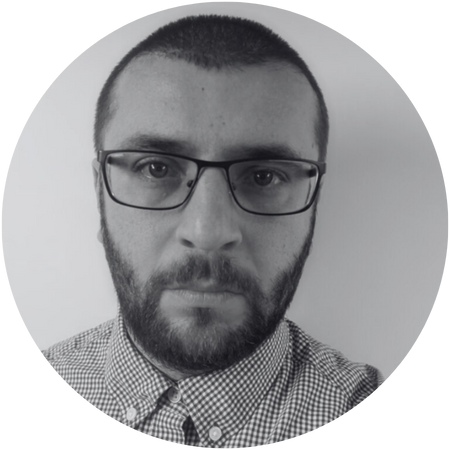
Lucian Burlacu
CLOUD ARCHITECT, SHAPEBLUE
15:30 - 16:00
Migrating 1000’s of VMs from VMware to CloudStack

Lucian Burlacu
CLOUD ARCHITECT, SHAPEBLUE
Migrating thousands of VMs from VMware to CloudStack enables companies and individuals to cut costs, escape vendor lock-in, and gain operational agility. With the right automation and phased approach, large-scale migrations can be achieved with minimal disruption. This session will explore some of the technical steps involved.
16:10 - 16:40
KVM Storage Performance: A Comparative Analysis of I/O Modes

Venko Moyankov
Solutions Architect, StorPool
16:10 - 16:40
KVM Storage Performance: A Comparative Analysis of I/O Modes

Venko Moyankov
Solutions Architect, StorPool
Building a high-performance, cost-effective cloud requires a deep understanding of the underlying storage infrastructure. The KVM virtualization stack offers a complex landscape of I/O technologies, from traditional iothread and aio modes to the newer, low-overhead io_uring. While these options promise different levels of performance and resource utilization, selecting the optimal configuration for a given workload can be a significant challenge for cloud builders and designers.
This presentation dives into a comprehensive benchmarking study designed to demystify these choices. Using industry-standard tools like FIO, pgbench, and rsync, we compare a range of KVM storage configurations across key metrics: latency, maximum IOPS, throughput, and CPU overhead. We will provide a data-driven comparison of different I/O modes—including io_uring and its predecessors—and explore how specific configurations impact performance for diverse workloads.
Join us to gain the practical knowledge needed to make informed design decisions for your cloud infrastructure. We will equip you with the insights to understand the trade-offs, identify performance bottlenecks, and build a KVM stack that delivers the best results for your specific needs.
16:50 - 17:20
Where's my Instance? How CloudStack finds a suitable deployment destination
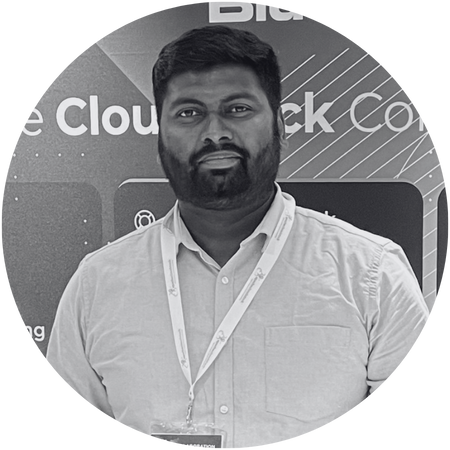
Jithin Raju
Cloud Architect, ShapeBlue
13:30 - 14:30
WORKSHOP: Migration Showcase: VMware to CloudStack in Action

Joffrey Luangsaysana, Navid Abdoul
Team Members, DIMSI
14:30 - 15:30
WORKSHOP: Measuring Storage Performance: What to Measure and How

Venko Moyankov
Solutions Architect, StorPool
14:30 - 15:30
Measuring Storage Performance: What to Measure and How

Venko Moyankov
Solutions Architect, StorPool
Measuring storage performance is a critical skill for anyone managing modern IT infrastructure. Yet, with so many variables and tools, it’s easy to get lost or draw the wrong conclusions. This hands-on, one-hour workshop provides a practical, no-nonsense guide to storage performance benchmarking, designed for storage admins, cloud builders, and solution architects.
In this fast-paced session, you will learn the essential principles of storage performance measurement, including what key parameters to focus on and which common mistakes to avoid. We’ll dive into the most important metrics—IOPS, throughput, and latency—and show you how to read and interpret benchmark results to accurately assess system capabilities.
The core of this workshop is a practical, hands-on session where you’ll use the industry-standard tool, FIO (Flexible I/O Tester), in a provided virtual environment. You’ll walk away with the ability to:
Design effective benchmark tests for your specific workloads.
Execute tests using industry-standard tools.
Analyze results to identify performance bottlenecks.
Make data-driven decisions about your storage infrastructure.
Join us to understand storage performance and make informed choices about your systems. This is a great chance to get the skills you need to measure storage performance.
Prerequisites: Participants should have a basic understanding of storage concepts and mid-level Linux administration skills. Please bring your own laptop.
15:30 - 16:30
WORKSHOP: Bridging CloudStack With MultiCloud
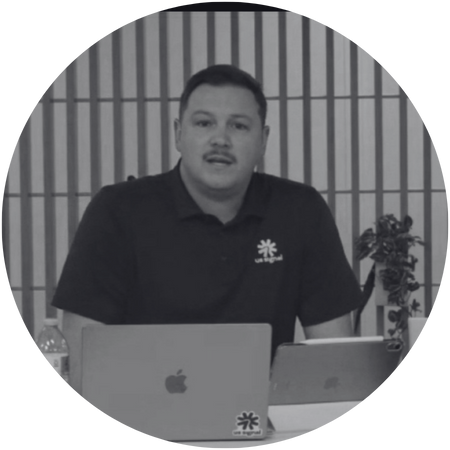
Taylor Greiner
Director of Innovation, US Signal
15:30 - 16:30
Bridging CloudStack With MultiCloud: “Azure Arc” and “AWS IAM Roles Anywhere" Integration

Taylor Greiner
DIRECTOR OF INNOVATION, US SIGNAL
As organizations increasingly adopt hybrid and multi-cloud strategies, CloudStack operators need practical approaches to extend their private cloud capabilities into public cloud environments.
This technical deep dive workshop demonstrates real-world integration patterns between CloudStack and major public cloud providers using Azure Arc and AWS IAM Roles Anywhere.
Attendees will see live demonstrations of seamless workload deployment and resource management across CloudStack and public cloud platforms. The session provides actionable insights for building unified multi-cloud architectures that leverage CloudStack as the orchestration layer while extending capabilities into Azure and AWS environments.
Learning Objectives
By the end of this session, participants will be able to:
1. Implement Azure Arc integration with CloudStack: Learn how to register CloudStack VMs with Azure Arc, enabling centralized management, policy enforcement, and monitoring across hybrid environments.
2. Configure AWS IAM Roles Anywhere for CloudStack workloads: Understand how to establish secure, temporary credential access for CloudStack VMs to AWS services without long-term access keys or VPN connections.
3. Design multi-cloud orchestration patterns: Explore architectural approaches for workload distribution, data synchronization, and service integration across CloudStack and public cloud platforms.
15:30 - 16:30
WORKSHOP: Bridging CloudStack With MultiCloud

Taylor Greiner
Director of Innovation, US Signal
15:30 - 16:30
WORKSHOP: Bridging CloudStack With MultiCloud

Taylor Greiner
DIRECTOR OF INNOVATION, US SIGNAL
As organizations increasingly adopt hybrid and multi-cloud strategies, CloudStack operators need practical approaches to extend their private cloud capabilities into public cloud environments.
This technical deep dive workshop demonstrates real-world integration patterns between CloudStack and major public cloud providers using Azure Arc and AWS IAM Roles Anywhere.
Attendees will see live demonstrations of seamless workload deployment and resource management across CloudStack and public cloud platforms. The session provides actionable insights for building unified multi-cloud architectures that leverage CloudStack as the orchestration layer while extending capabilities into Azure and AWS environments.
Learning Objectives
By the end of this session, participants will be able to:
1. Implement Azure Arc integration with CloudStack: Learn how to register CloudStack VMs with Azure Arc, enabling centralized management, policy enforcement, and monitoring across hybrid environments.
2. Configure AWS IAM Roles Anywhere for CloudStack workloads: Understand how to establish secure, temporary credential access for CloudStack VMs to AWS services without long-term access keys or VPN connections.
3. Design multi-cloud orchestration patterns: Explore architectural approaches for workload distribution, data synchronization, and service integration across CloudStack and public cloud platforms.
15:30 - 16:30
WORKSHOP: Bridging CloudStack With MultiCloud

Taylor Greiner
Director of Innovation, US Signal
15:30 - 16:30
WORKSHOP: Bridging CloudStack With MultiCloud

Taylor Greiner
DIRECTOR OF INNOVATION, US SIGNAL
As organizations increasingly adopt hybrid and multi-cloud strategies, CloudStack operators need practical approaches to extend their private cloud capabilities into public cloud environments.
This technical deep dive workshop demonstrates real-world integration patterns between CloudStack and major public cloud providers using Azure Arc and AWS IAM Roles Anywhere.
Attendees will see live demonstrations of seamless workload deployment and resource management across CloudStack and public cloud platforms. The session provides actionable insights for building unified multi-cloud architectures that leverage CloudStack as the orchestration layer while extending capabilities into Azure and AWS environments.
Learning Objectives
By the end of this session, participants will be able to:
1. Implement Azure Arc integration with CloudStack: Learn how to register CloudStack VMs with Azure Arc, enabling centralized management, policy enforcement, and monitoring across hybrid environments.
2. Configure AWS IAM Roles Anywhere for CloudStack workloads: Understand how to establish secure, temporary credential access for CloudStack VMs to AWS services without long-term access keys or VPN connections.
3. Design multi-cloud orchestration patterns: Explore architectural approaches for workload distribution, data synchronization, and service integration across CloudStack and public cloud platforms.
13:30 - 14:00
Building a sovereign, multi-zone Cloud with CloudStack

Brian Turnbow, Marco Ziglioli
Team members, CDLAN
13:30 - 14:00
Building a sovereign, multi-zone Cloud with CloudStack

Brian Turnbow, Marco Ziglioli
Team Members, CDLAN
CDLAN adopted CloudStack to build a truly sovereign cloud, distributed across its data centers in Milan and Rome, with a multi-zone architecture and multi-hypervisor support (KVM and VMware). Thanks to a pay-per-use model, our customers and partners can access scalable resources with no upfront costs, while benefiting from hybrid integration and simplified management. In our talk we will share how this resilient infrastructure has enabled CDLAN and our partners to accelerate the adoption of cloud services in the Italian Market.
14:10 - 14:40
Infrastructure Strategies and Innovation in the AI Era

Daven Winans
VP of Engineering & Innovation, US Signal
15:10 - 15:40
Infrastructure Strategies and Innovation in the AI Era

Daven Winans
VP of Engineering & Innovation, US Signal
The rapid rise of AI, large language models, and inference workloads are driving unprecedented demand for compute resources. CloudStack operators and service providers need to leverage practical solutions and architectures to deliver services and performance to the user base.
In this session, US Signal will explore how infrastructure is evolving to meet these demands, with a focus on real-world performance metrics comparing CPU-only vs GPU-accelerated workloads and x86 vs Arm64 platforms. We’ll also examine the critical role of open-source hypervisors, GPU virtualization, time slicing, and containerized workloads on high-core hosts in maximizing utilization, improving efficiency, and reducing stranded resources.
Attendees will gain insight into how these innovations converge into hybrid infrastructure models that balance performance, cost, and sustainability.
By the end of this session, participants will be able to:
1. Evaluate the impact of AI/LLM inference workloads on infrastructure performance and global power consumption.
2. Compare performance-per-watt across CPU-only vs GPU-accelerated systems and x86 vs Arm64 architectures.
3. Apply concepts of open-source hypervisors, vGPU, GPU time slicing, and containers to optimize resource efficiency.
4. Design hybrid infrastructure strategies that balance performance, cost, and sustainability for AI-era workloads.
14:50 - 15:20
Exploring VMWare to CloudStack Migration: Operational Guarantees and business impact

Joffrey Luangsaysana, Grégoire Lamodière
Team Members, DIMSI
14:30 - 15:00
Scaling CloudStack to 100K Hosts and Millions of Instances

Abhishek Kumar
Software Engineer, ShapeBlue
This session offers a comprehensive business overview of migrating from VMware to CloudStack, examining impacts on services, cost management, and IT strategy to help organizations maximize their cloud investments.
15:30 - 16:00
Extensions Framework (XaaS) - Enabling Orchestrate Anything

Harikrishna Patnala, Marco Sinhoreli
Team Members, ShapeBlue
15:10 - 15:40
The Importance of a Proper Out-of-Band Network When Running CloudStack
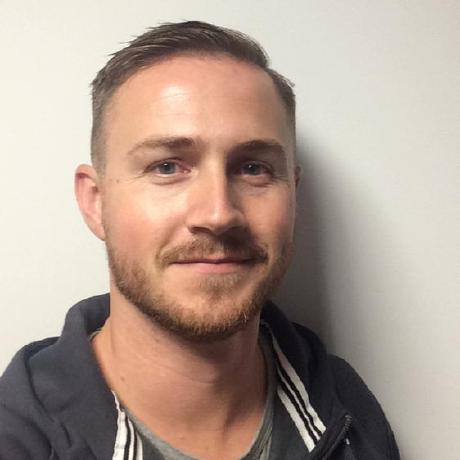
Wido den Hollander
CTO, Your.Online
The Extensions Framework in Apache CloudStack enables seamless integration of external services (XaaS) into the CloudStack ecosystem. It allows operators to register and manage custom extensions, supporting a wide range of types such as orchestrators, network elements, and authenticators. This empowers users to tailor CloudStack’s behaviour to their infrastructure needs. CloudStack also ships with several inbuilt extensions, including Proxmox, Hyper-V, and Canonical MaaS, demonstrating the flexibility of the framework. For instance, a Proxmox extension can manage VM lifecycles through custom scripts, showcasing the power and adaptability of CloudStack’s extension model.
16:10 - 16:40
Bringing CloudStack to Life with LLMs: Enabling Intelligent, Conversational Troubleshooting

Vivek Kumar
DevOps Lead, Yotta
14:30 - 15:00
Scaling CloudStack to 100K Hosts and Millions of Instances

Abhishek Kumar
Software Engineer, ShapeBlue
Experience the power of AI-driven ChatOps tailored for Apache CloudStack. This modular Python-based chatbot, powered by OpenAI, enables users to ask natural language questions that translate into real-time MySQL queries, fetch logs from Elasticsearch, and deliver actionable insights, all through an intuitive web-based interface. With built-in memory, dynamic configuration, and intelligent log analysis, it redefines how Ops teams troubleshoot, monitor, and interact with cloud infrastructure. Join us to see how conversational AI can streamline your operations and accelerate problem resolution.
16:50 - 17:20
Back to the Origins of the Internet: Sovereignty as Strategic Survival

Alexander Lapp
BUSINESS DEVELOPMENT, PROIO
15:10 - 15:40
The Importance of a Proper Out-of-Band Network When Running CloudStack

Wido den Hollander
CTO, Your.Online
The internet once promised decentralization. Today, a few large monoliths dominate the digital world. How did the vision of the Internet pioneers turn into a dangerous dependency? This presentation highlights how technical vendor lock-in, geopolitical risks, and the cultural imprint of AI models threaten the foundations of our digital sovereignty. We discuss how open-source technologies such as CloudStack can put power back in the hands of users to regain control over data and infrastructure. Learn why sovereignty is not just a philosophical concept, but a strategic necessity for the survival of every company.
13:30 - 14:00
Customizing CloudStack Network Topology with VNF Appliances

Wei Zhou
SOFTWARE ARCHITECT, SHAPEBLUE
13:30 - 14:00
Migrating 1000’s of VMs from VMware to CloudStack
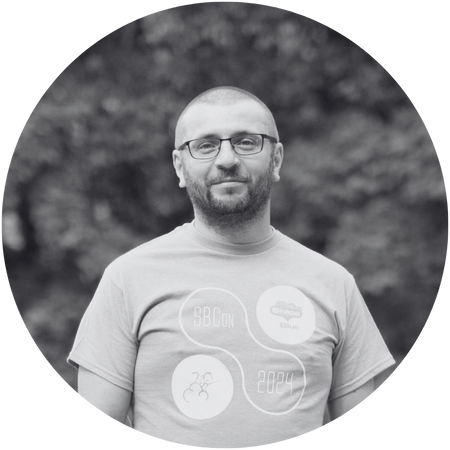
Lucian Burlacu
Cloud Architect, ShapeBlue
The VNF appliance, introduced in Apache CloudStack 4.19, has been used by several CloudStack users as an alternative to the CloudStack Virtual Router. This talk will provide an overview of VNF appliances and showcase some real-world use cases. It will also introduce ongoing work on the VNF provider framework, which offers much better integration with VNF appliances. Topics will include technical details, the built-in VNF provider, and guidance on how to develop custom VNF providers.The VNF appliance, introduced in Apache CloudStack 4.19, has been used by several CloudStack users as an alternative to the CloudStack Virtual Router. This talk will provide an overview of VNF appliances and showcase some real-world use cases. It will also introduce ongoing work on the VNF provider framework, which offers much better integration with VNF appliances. Topics will include technical details, the built-in VNF provider, and guidance on how to develop custom VNF providers.
14:10 - 14:40
Cost Effective, Secure Repatriation with Ampere & CloudStack

Pete Logan
Principal Field Engineer, Ampere
14:10 - 14:40
Cost Effective, Secure Repatriation with Ampere & CloudStack

Pete Logan
Principal Field Engineer, Ampere
It’s established now that moving workloads off hyperscalers will reduce TCO, but you can offer more when dropping that onto Ampere CPU based systems through better efficiency and high utilisation. Pete Logan from Ampere describes how, using the joint architecture with CloudStack & ShapeBlue. Bonus; you can port your Graviton and other Arm workloads directly too!
14:50 - 15:20
LINSTOR/DRBD updates for CloudStackers

Philipp Reisner
CEO, LINBIT
14:30 - 15:00
Majority in DRBD

Philipp Reisner
CEO, LINBIT
In this session, Philipp will provide a concise introduction and overview of LINSTOR and DRBD, explaining how they offer highly available block storage to VMs in CloudStack clusters.
From there, Philipp will present the recently introduced features and improvements of LINSTOR and DRBD, including a discussion of the rationale behind the changes and the next items on the project’s roadmap.
On the LINSTOR side, this includes: satellite restart time with thousands of resources, general scalability improvements in the range of 1,000 to 10,000 virtual volumes, and storing the master passphrase using systemd credentials (TPM chip), as well as multipathing of DRBD replication links.
On the DRBD side: resync without replication, higher bitmap granularity, performance optimizations, zero-copy receive, and more.
On the LINSTOR driver in CloudStack: thoughts on online migrating storage volume between primary storage.
15:30 - 16:00
Migrating 1000’s of VMs from VMware to CloudStack

Lucian Burlacu
CLOUD ARCHITECT, SHAPEBLUE
15:10 - 15:40
Enhancements to CloudStack Kubernetes Service

Pearl Dsilva
Software Engineer, ShapeBlue
Migrating thousands of VMs from VMware to CloudStack enables companies and individuals to cut costs, escape vendor lock-in, and gain operational agility. With the right automation and phased approach, large-scale migrations can be achieved with minimal disruption. This session will explore some of the technical steps involved.
16:10 - 16:40
KVM Storage Performance: A Comparative Analysis of I/O Modes

Venko Moyankov
Solutions Architect, StorPool
14:30 - 15:00
Majority in DRBD

Philipp Reisner
CEO, LINBIT
Building a high-performance, cost-effective cloud requires a deep understanding of the underlying storage infrastructure. The KVM virtualization stack offers a complex landscape of I/O technologies, from traditional iothread and aio modes to the newer, low-overhead io_uring. While these options promise different levels of performance and resource utilization, selecting the optimal configuration for a given workload can be a significant challenge for cloud builders and designers.
This presentation dives into a comprehensive benchmarking study designed to demystify these choices. Using industry-standard tools like FIO, pgbench, and rsync, we compare a range of KVM storage configurations across key metrics: latency, maximum IOPS, throughput, and CPU overhead. We will provide a data-driven comparison of different I/O modes—including io_uring and its predecessors—and explore how specific configurations impact performance for diverse workloads.
Join us to gain the practical knowledge needed to make informed design decisions for your cloud infrastructure. We will equip you with the insights to understand the trade-offs, identify performance bottlenecks, and build a KVM stack that delivers the best results for your specific needs.
16:50 - 17:20
Where's my Instance? How CloudStack finds a suitable deployment destination

Jithin Raju
Cloud Architect, ShapeBlue
13:30 - 14:30
WORKSHOP: Migration Showcase: VMware to CloudStack in Action

Joffrey Luangsaysana, Navid Abdoul
Team Members, DIMSI
14:30 - 15:30
WORKSHOP: Measuring Storage Performance: What to Measure and How

Venko Moyankov
Solutions Architect, StorPool
14:30 - 15:00
Scaling CloudStack to 100K Hosts and Millions of Instances

Abhishek Kumar
Software Engineer, ShapeBlue
Measuring storage performance is a critical skill for anyone managing modern IT infrastructure. Yet, with so many variables and tools, it’s easy to get lost or draw the wrong conclusions. This hands-on, one-hour workshop provides a practical, no-nonsense guide to storage performance benchmarking, designed for storage admins, cloud builders, and solution architects.
In this fast-paced session, you will learn the essential principles of storage performance measurement, including what key parameters to focus on and which common mistakes to avoid. We’ll dive into the most important metrics—IOPS, throughput, and latency—and show you how to read and interpret benchmark results to accurately assess system capabilities.
The core of this workshop is a practical, hands-on session where you’ll use the industry-standard tool, FIO (Flexible I/O Tester), in a provided virtual environment. You’ll walk away with the ability to:
Design effective benchmark tests for your specific workloads.
Execute tests using industry-standard tools.
Analyze results to identify performance bottlenecks.
Make data-driven decisions about your storage infrastructure.
Join us to understand storage performance and make informed choices about your systems. This is a great chance to get the skills you need to measure storage performance.
Prerequisites: Participants should have a basic understanding of storage concepts and mid-level Linux administration skills. Please bring your own laptop.
15:30 - 16:30
WORKSHOP: Bridging CloudStack With MultiCloud

Taylor Greiner
Director of Innovation, US Signal
13:30 - 14:30
TBC

TBC
TBC
As organizations increasingly adopt hybrid and multi-cloud strategies, CloudStack operators need practical approaches to extend their private cloud capabilities into public cloud environments.
This technical deep dive workshop demonstrates real-world integration patterns between CloudStack and major public cloud providers using Azure Arc and AWS IAM Roles Anywhere.
Attendees will see live demonstrations of seamless workload deployment and resource management across CloudStack and public cloud platforms. The session provides actionable insights for building unified multi-cloud architectures that leverage CloudStack as the orchestration layer while extending capabilities into Azure and AWS environments.
Learning Objectives
By the end of this session, participants will be able to:
1. Implement Azure Arc integration with CloudStack: Learn how to register CloudStack VMs with Azure Arc, enabling centralized management, policy enforcement, and monitoring across hybrid environments.
2. Configure AWS IAM Roles Anywhere for CloudStack workloads: Understand how to establish secure, temporary credential access for CloudStack VMs to AWS services without long-term access keys or VPN connections.
3. Design multi-cloud orchestration patterns: Explore architectural approaches for workload distribution, data synchronization, and service integration across CloudStack and public cloud platforms.
16:40 - 17:00
INTERVIEW 1

TBC
Director Engineering, Cloudian
14:30 - 15:00
Scaling CloudStack to 100K Hosts and Millions of Instances

Abhishek Kumar
Software Engineer, ShapeBlue
Discuss the why, how, and what of an exciting CloudStack scalability project aimed at significantly expanding its capacity to support 100,000 hosts and millions of VMs, volumes, networks, accounts, and domains. Explore CloudStack’s current scalability limits and assess how much further we can push its boundaries. Discuss the innovations, challenges, and strategies required for CloudStack to thrive in hyper-scale environments, and consider what it would take to achieve this ambitious level of performance and reliability.
Time
Name
Speaker
Agenda
13:25 - 14:30
Loading...
Lorem ipsum dolor sit amet, consectetur adipiscing elit. Ut elit tellus, luctus nec ullamcorper mattis, pulvinar dapibus leo.

